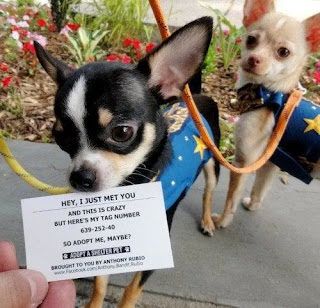It’s another day in paradise. Paradise Island in the Bahamas that is. With the support of Save the Manatee Club (SMC), a female manatee, Rita, and her calf, Georgie, were released back into the wildon April 19, 2012, after spending several months at Dolphin Cay-Atlantis on Paradise Island.
 |
| Rita gave birth to Georgie, a female, in June 2010. |
|
Rita’s story in the Bahamas began in November 2009, when she was first spotted in the Spanish Wells Harbor in North Eleuthera. A photograph of the distinctive scar pattern on her back was given to the U.S. Geological Survey’s Sirenia Project (USGS). Researchers there identified her as Rita, a manatee who had been sighted in south Florida since February 1988. Based on previous sightings between 1988 and 2008, Rita had given birth to at least seven calves. Once Rita was sighted in the Bahamas in November 2009, marine mammal care staff from Dolphin Cay-Atlantis conducted a health assessment and determined that Rita was pregnant yet again. Rita gave birth to a female calf named Georgie in June 2010, and she and Georgie remained in the area around Spanish Wells Harbor until Hurricane Irene hit in August 2011.
Once it was clear the the manatees were healthy, plans to return them to the wild at a safer location were initiated. Several organizations were involved in this process, including the Bahamas Marine Mammal Research Organization (BMMRO), the Bahamas Department of Marine Resources (BDMR), Dolphin Cay-Atlantis, the USGS Sirenia Project, and Save the Manatee Club. It was decided that the best place to release Rita and Georgie was in Great Harbor Cay in the Berry Islands, where a group of manatees already resided. Both Rita and Georgie were fitted with GPS tracking devices before being released so that researchers can follow their movements and relocate them if they venture into unsafe habitat.
Rita and Georgie are released at Great Harbour Cay in the Berry Islands, where several manatees are known to reside
Historically, manatee sightings in the Bahamas have been few and far between, and it was thought that the lack of freshwater sources has limited manatee population growth in the area. However, in the past few decades, the number of manatees reported in the Bahamas has been increasing. For this reason, the BMMRO began conducting research on the manatees in Great Harbour Cay 13 years ago. By attaching tracking equipment to Rita and Georgie, researchers will be able to study the habitats used by manatees in the Bahamas and will gain insights into where manatees find food and fresh water. By following the movements of these two manatees, field researchers should also have opportunities to photograph and identify other manatees in the Bahamas population and determine their gender and reproductive status. The information gained through these studies will help researchers better determine how to manage the manatee population in the Bahamas.
In addition to research efforts, the BMMRO also works to educate the local community about manatees through school presentations and reaching out to the boating community. They will be releasing a short five-minute educational video about manatees in the Bahamas later this year.

There are several organizations that contributed to this successful release and monitoring project. The Bahamas Department of Marine Resources, Bahamas Marine Mammal Research Organization, Dolphin-Cay Atlantis, and USGS Sirena Project were all heavily involved in the capture, care, and release of Rita and Georgie. To assist in the release and monitoring of Rita and Georgie, Save the Manatee Club provided substantial financial support to BMMRO and the USGS to help cover the cost of the transport vessel, monitoring vessel and fuel, a GoPro camera, an adult and calf belt/tether for the radio tag, GPS tag batteries, and software. In addition, we contributed educational materials to help BMMRO with their outreach efforts. This included several of our new manatee awareness dock signs. A big thank you to our Save the Manatee Club members, who made this contribution possible!
By Courtney Edwards
Staff Biologist, Save the Manatee Club
 Yet again, enthusiastic animal-loving conservationists showed up in high volumes for the first two weeks of Disney's Chimpanzee realize back in April. Now that all the ticket sales have been counted, Disney and the Jane Goodall Institute have confirmed that close to 130,000 acres of prime habitat have been secured for the chimpanzees in Tchimpounga Nature Reserve in the Congo!!
Yet again, enthusiastic animal-loving conservationists showed up in high volumes for the first two weeks of Disney's Chimpanzee realize back in April. Now that all the ticket sales have been counted, Disney and the Jane Goodall Institute have confirmed that close to 130,000 acres of prime habitat have been secured for the chimpanzees in Tchimpounga Nature Reserve in the Congo!! 









